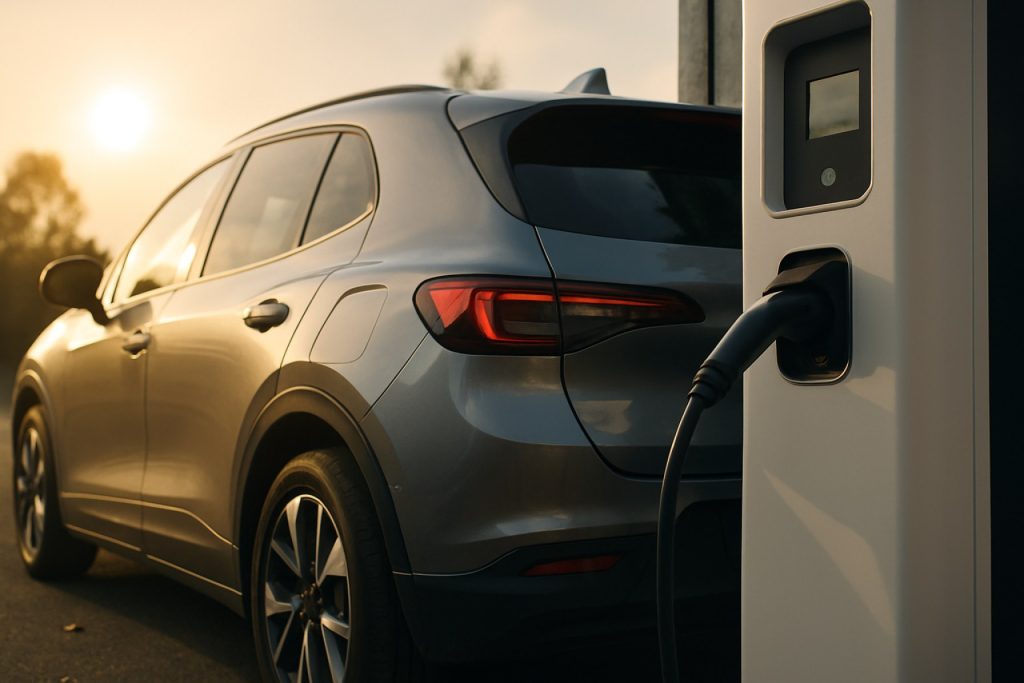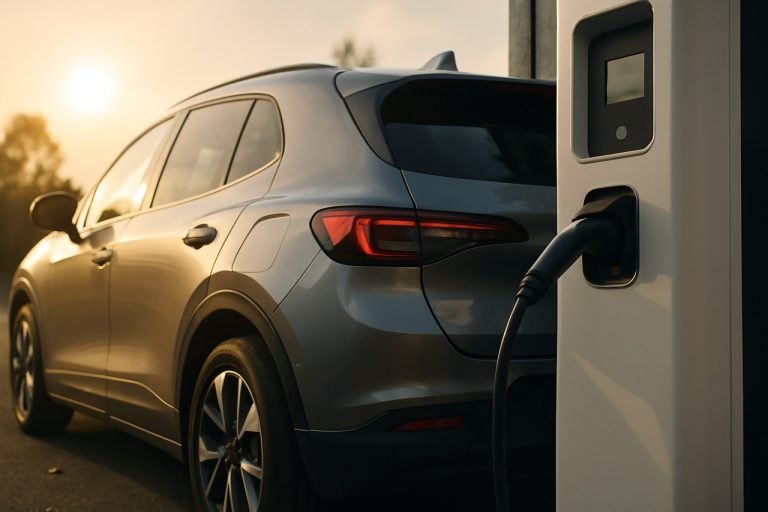
- Global battery production for electric vehicles (EVs) is set to quadruple by 2030, reshaping manufacturing centers from China to the U.S. and India.
- Lithium-ion and lithium iron phosphate (LFP) batteries dominate, with LFP’s safety and affordability accelerating EV adoption worldwide.
- Solid-state battery technology promises up to 50% higher energy density and improved safety, potentially revolutionizing the market by decade’s end.
- Policies like the Inflation Reduction Act and national EV incentives are driving investment, localizing supply chains, and reducing upfront vehicle costs.
- Recycling, closed-loop production, and ethical sourcing in the battery supply chain address environmental and resource concerns.
- The EV revolution’s success hinges on rapid, responsible scaling of battery technology for cleaner mobility and a greener planet.
Shifts ripple through the world’s manufacturing capitals as the race to command the electric vehicle (EV) era intensifies. Sweeping advances in battery technology now drive the charge—literally—toward an electrified future, promising not only cleaner air but a dramatic economic realignment. The shadow cast by fossil fuels begins to recede as lithium, nickel, and cobalt reign over a rapidly evolving global supply chain.
Eyewitnesses in bustling megafactories and sleek research labs observe technicians fine-tuning the latest generations of batteries—cells promising longer range, faster charging, and iron-clad safety. Instead of mere incremental improvements, the industry stands on the brink of a transformation: the amount of global battery production is projected to quadruple by 2030, surpassing a staggering 1,000 GWh annually. This is not a distant dream, but the result of investments and infrastructure springing up from the Americas to Asia.
In Guangzhou and Shanghai, new gigafactories thrum with around-the-clock activity, driven by relentless Chinese demand and a government agenda that ranks clean transit as a national priority. Across the ocean, in the United States, the Inflation Reduction Act accelerates domestic battery production, cutting supply chain vulnerabilities and encouraging automakers such as Ford and GM to electrify their fleets at breakneck speed. Meanwhile, India is laying down ambitious plans, using incentives to lure investment and build out its own battery manufacturing prowess, marking the continent as the next powerhouse in the EV shift.
The composition of batteries is in flux. Lithium-ion cells dominate for now, but lithium iron phosphate (LFP) batteries—favored by industry giants for their durability and cost savings—are scaling faster than even the most bullish analysts anticipated. LFP’s reliability is pushing it into mass-market vehicles, democratizing access to electric mobility for millions.
Yet, on the horizon, another revolution looms. Solid-state battery technology, once relegated to the drawing board, is stepping into the spotlight. These next-generation cells can provide up to 50% more energy density without raising costs or fire risk. Companies like Toyota and Panasonic lead this silent race, piloting production lines with the expectation that—by decade’s end—the EV market will shift decisively away from liquid electrolytes to new solid-state powerhouses.
Behind these remarkable advances is a green undercurrent. Bi-directional recycling, closed-loop production, and new extraction methods aim to curb environmental tolls and ethical mining concerns. Companies such as Umicore and Redwood Materials scale up operations to reclaim lithium and cobalt from used electronics and retired EVs, weaving circularity into the heart of the industry. This commitment responds to skepticism around resource extraction and backs pledges for low-carbon supply chains.
Benefits extend beyond climate. Cities once stifled by traffic and tailpipes now glimpse the promise of cleaner air and quieter streets. Policymakers around the world heap incentives into the market mix, reducing upfront EV costs and pushing consumer adoption into the mainstream.
For the world’s automakers and industrial states, the decade ahead will be decisive. Those that rise to meet the growing demand for batteries—while managing risks and environmental responsibilities—will define the next chapter of transportation. The scale and speed of change suggest that the “EV revolution” is less about distant goals and more about daily reality, unfolding warehouse by warehouse, city by city.
The key takeaway: The race is not just about building more batteries, but building them smarter, cleaner, and everywhere. As 2030 approaches, the future of electric mobility—and the health of the planet—hinges on how swiftly industry can deliver on the promise of plentiful, powerful, and ethical energy storage.
For authoritative information on clean energy and sustainability efforts, visit the International Energy Agency at iea.org. Those tracking advances in EV technology can find extensive updates at Tesla and new industry policy perspectives at BloombergNEF.
Solid-State Batteries & Global EV Boom: Facts, Hacks, and the Future You Can’t Ignore
The Evolving Global EV Battery Industry: What You Didn’t Know
The world’s race for electric vehicle (EV) supremacy is remaking economies and industries at breakneck speed—and while the mainstream news covers big announcements, an unseen wave of technical innovation and policy is powering change behind the headlines. Here’s what the source article didn’t fully explore, and what you absolutely need to know.
—
1. Battery Advancements: Beyond LFP and Solid-State
While Lithium Iron Phosphate (LFP) and solid-state batteries dominate headlines, several other chemistries and innovations are reshaping the industry:
– Nickel Manganese Cobalt (NMC) Trends: NMC batteries, which offer higher energy density than LFP but at a higher cost, are still favored for long-range and high-performance EVs.
– Silicon Anode Research: Companies like Sila Nanotechnologies are close to commercializing silicon-based anodes that boost battery capacity by up to 20% ([source](https://www.silanano.com)).
– Sodium-Ion Batteries: Chinese manufacturers, led by CATL, are developing sodium-ion batteries as a low-cost alternative for specific EV and grid storage use cases—without relying on lithium or cobalt.
—
2. Step-by-Step: How to Maximize EV Battery Life
How-To:
1. Optimize Charging Habits: Keep battery between 20-80% charged for daily use.
2. Avoid Extreme Temperatures: Park in shaded or climate-controlled environments.
3. Use Manufacturer’s Fast Chargers Where Possible: These maintain optimal battery thermal profiles.
Life Hack: Schedule charging overnight when grid demand (and emissions intensity) is lowest.
—
3. Market Forecasts & Industry Trends
– Global Market Value: The global EV battery market is projected to surpass $250 billion by 2030 ([source: BloombergNEF](https://www.bnef.com)).
– EV Sales Growth: Worldwide EV sales are expected to reach 25 million units/year by 2030, up from ~14 million in 2023 ([source: IEA](https://www.iea.org)).
– Gigafactory Expansion: The number of battery gigafactories is expected to triple by 2027, with Europe catching up to Asia in planned capacity.
—
4. Security, Sustainability & Ethical Sourcing
– Battery Passport Initiative: Industry is launching “battery passports” for traceability, certifying material origin and environmental impact ([source: Global Battery Alliance](https://www.globalbattery.org)).
– Cobalt Issues: Despite rising LFP adoption, cobalt mining—especially in the Democratic Republic of Congo—remains controversial due to environmental and ethical issues.
– Recycling Revolution: Companies like Umicore and Redwood Materials are developing closed-loop systems to extract valuable metals from retired batteries.
—
5. Real-World Use Cases & Comparisons
– Fleet Conversion: NYC, London, and Shenzhen now operate thousands of all-electric buses, reducing particulate emissions dramatically.
– Cost Comparison: As of early 2024, EV battery costs averaged $139/kWh (down from $707/kWh in 2010), closing the gap with gasoline vehicles ([source: BloombergNEF](https://www.bnef.com)).
– Charging Infrastructure: New bi-directional charging hubs (vehicle-to-grid) are rolling out—EVs can now help stabilize local power supplies during peak demand.
—
6. Pros & Cons Overview
Pros:
– Zero tailpipe emissions, cleaner cities
– Shrinking lifetime ownership costs
– Silent, instant torque performance
Cons:
– Range anxiety and charging speed limitations (for now)
– Upfront price premium (though shrinking rapidly)
– Battery raw material supply chain vulnerabilities
—
7. Limitations, Myths & Controversies
– Range Myth: Average US driver covers less than 40 miles/day—most EVs deliver 200+ miles per charge ([source: US Dept. of Energy](https://www.energy.gov)).
– Recycling Bottleneck: Only ~5% of retired lithium-ion batteries are recycled globally, emphasizing need for rapid infrastructure investment.
– Solid-State Challenge: While promising, solid-state batteries still face hurdles in mass production scalability and durability under real-world conditions.
—
8. Practical Insights, Tips & Quick Wins
– Check Local Incentives: Many countries, states, and cities offer substantial purchase rebates, tax credits, or free charging.
– Stay Updated: Battery chemistries and pricing shift fast—sign up for updates at authoritative sources like IEA.
– Future-Proof: If buying an EV today, ask about end-of-life recycling programs and battery warranty conditions.
—
9. FAQs: Top Reader Questions Answered
Q: When will EVs be cheaper than gasoline cars?
A: By 2025-2027, falling battery costs and incentives should make many models price-competitive, according to BloombergNEF.
Q: Is home-charging enough for daily driving?
A: For most users, absolutely. Public fast chargers are improving for long trips.
Q: Will my EV battery need replacing soon?
A: Most batteries are warrantied for 8-10 years and designed to last for over 150,000 miles.
Q: Are EVs really greener?
A: Yes—especially when charged with renewables and paired with recycling. Lifecycle emissions are much lower than internal combustion vehicles.
—
Actionable Recommendations
– Compare all-in costs of EVs to gasoline cars using real-life driving data.
– Prioritize models with LFP or solid-state batteries for improved longevity and safety.
– Opt into manufacturer recycling initiatives—ask your dealer!
– Monitor updates from IEA, Tesla, and BloombergNEF for breaking industry news.
Get ready—the future of transportation is clean, connected, and battery-powered. Jump in, stay informed, and drive the change!



